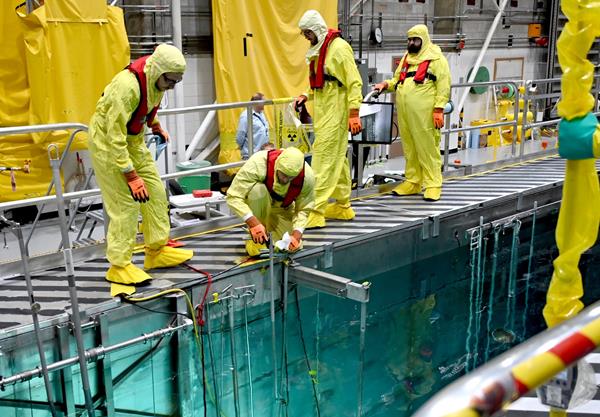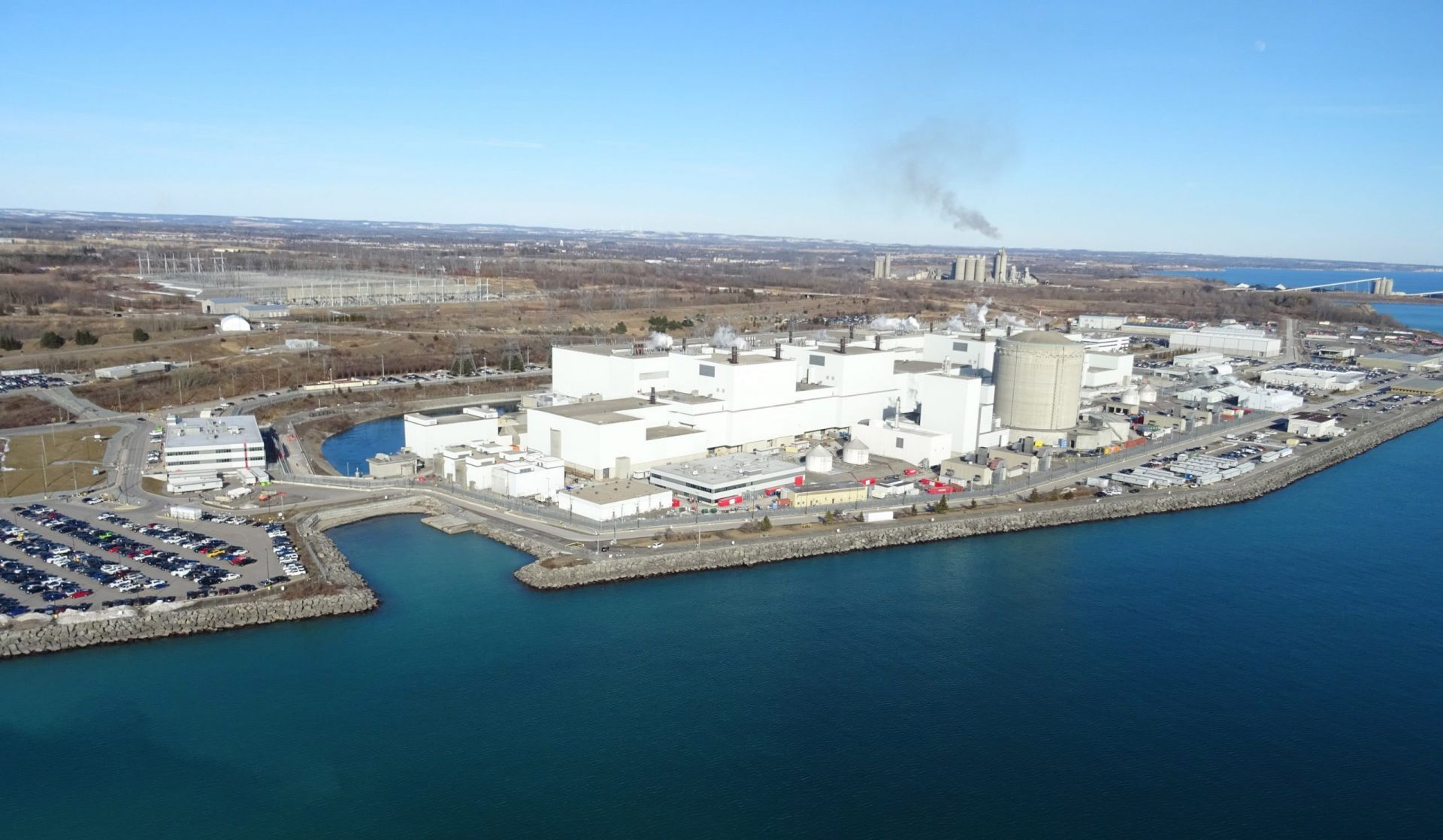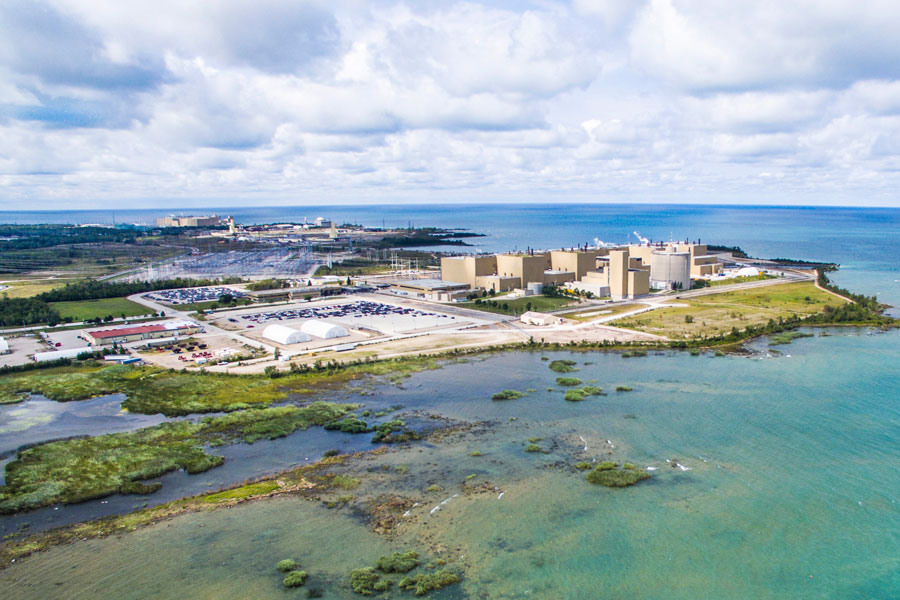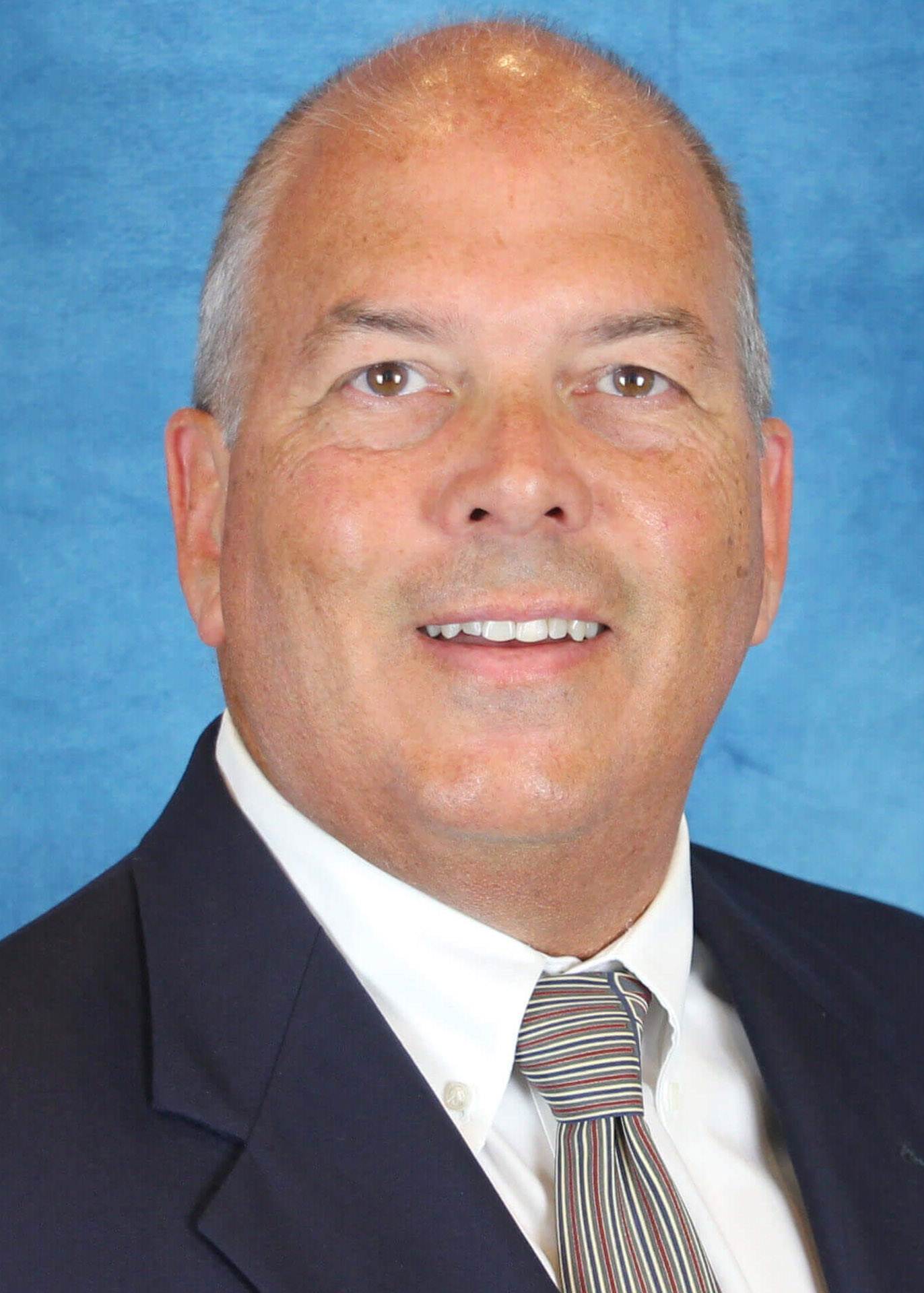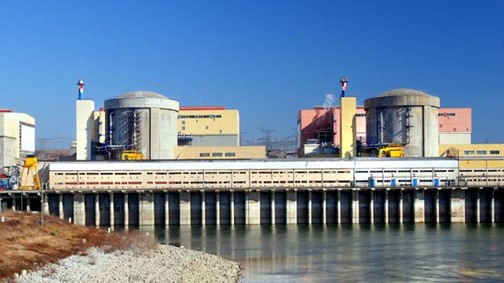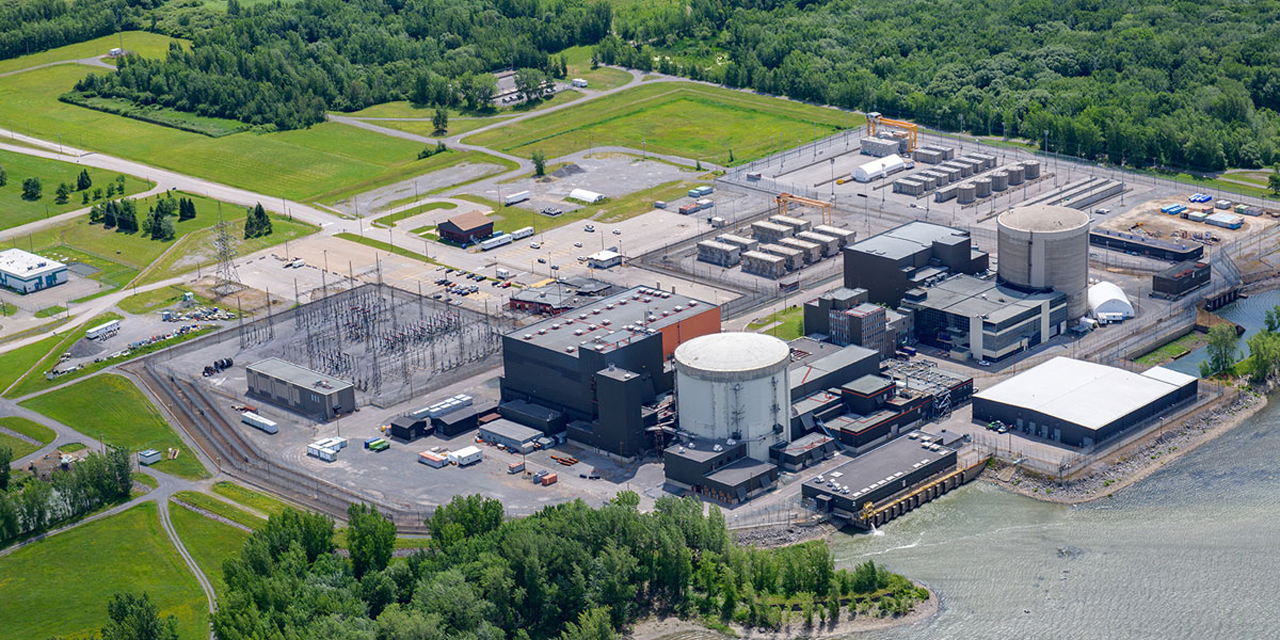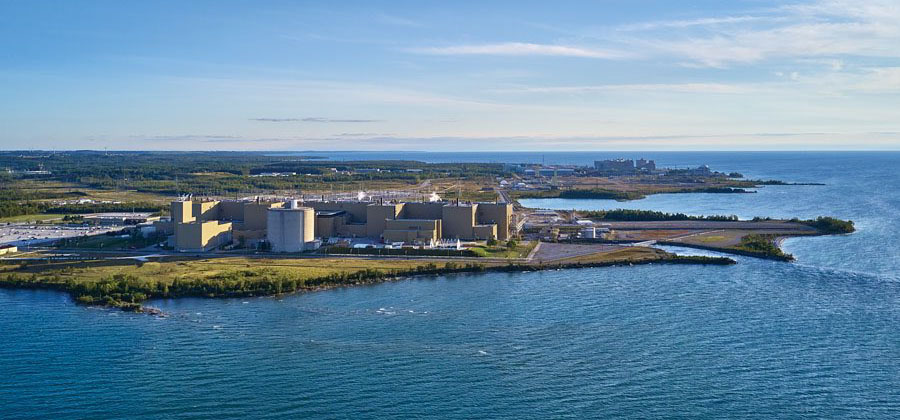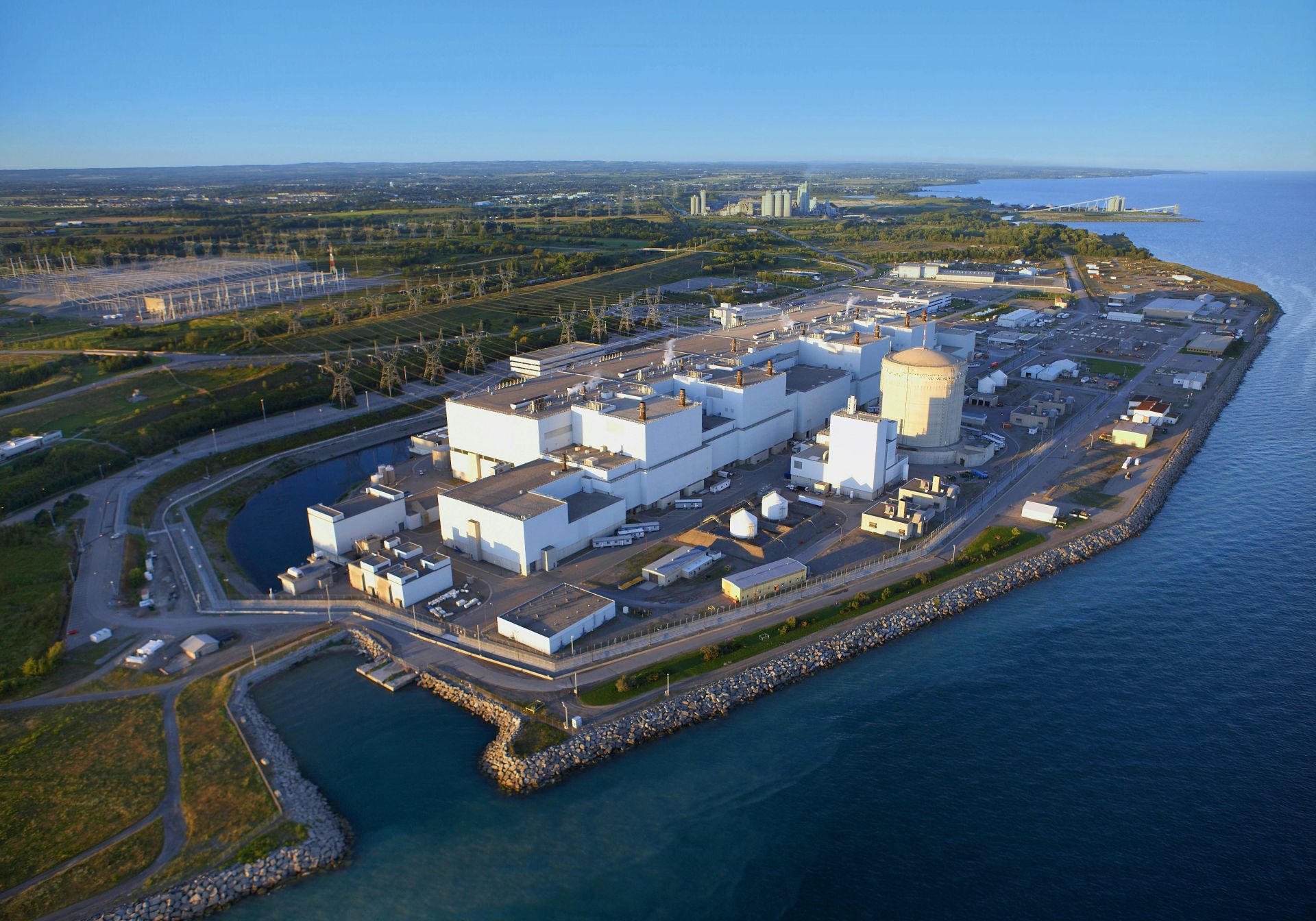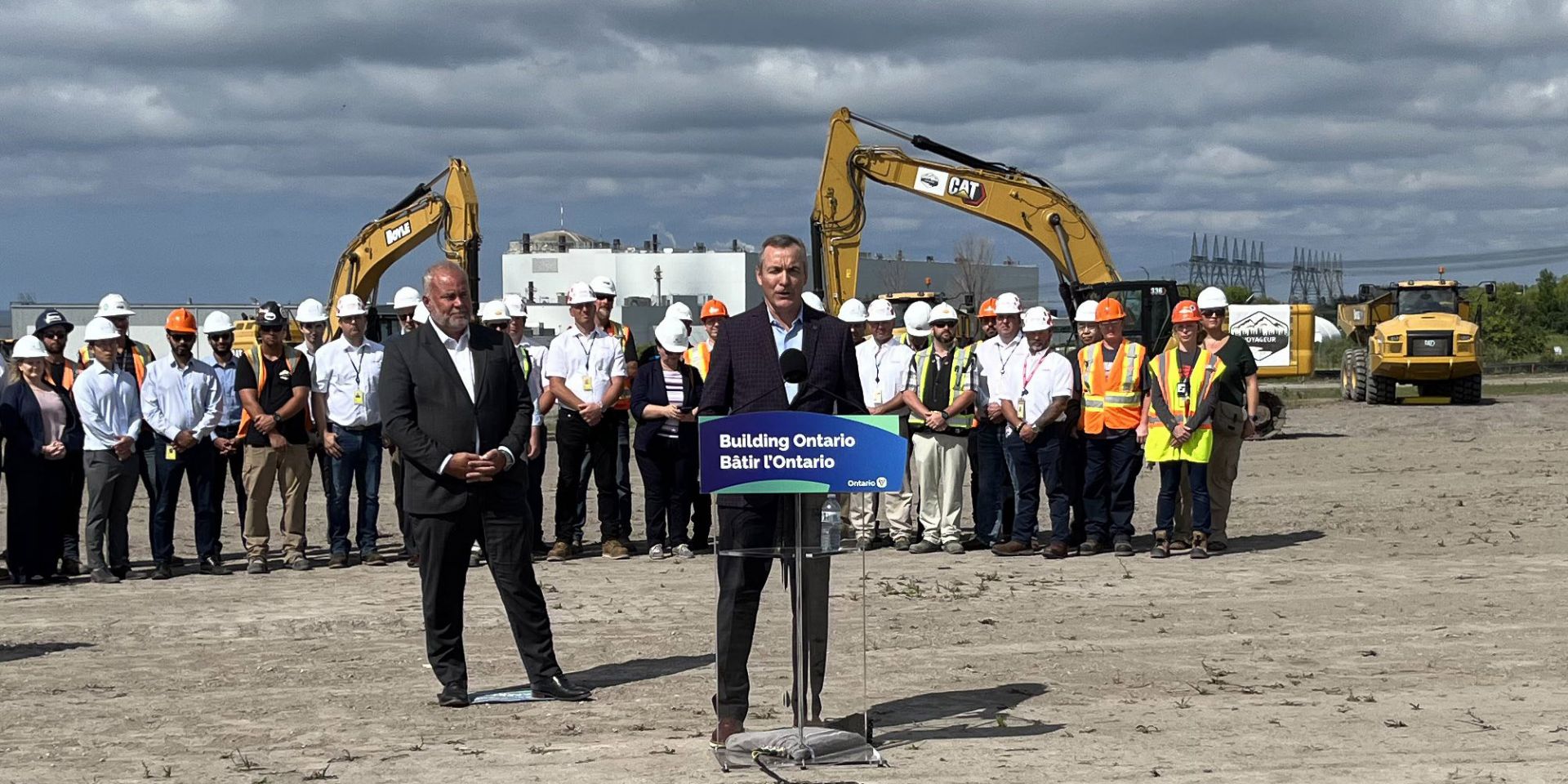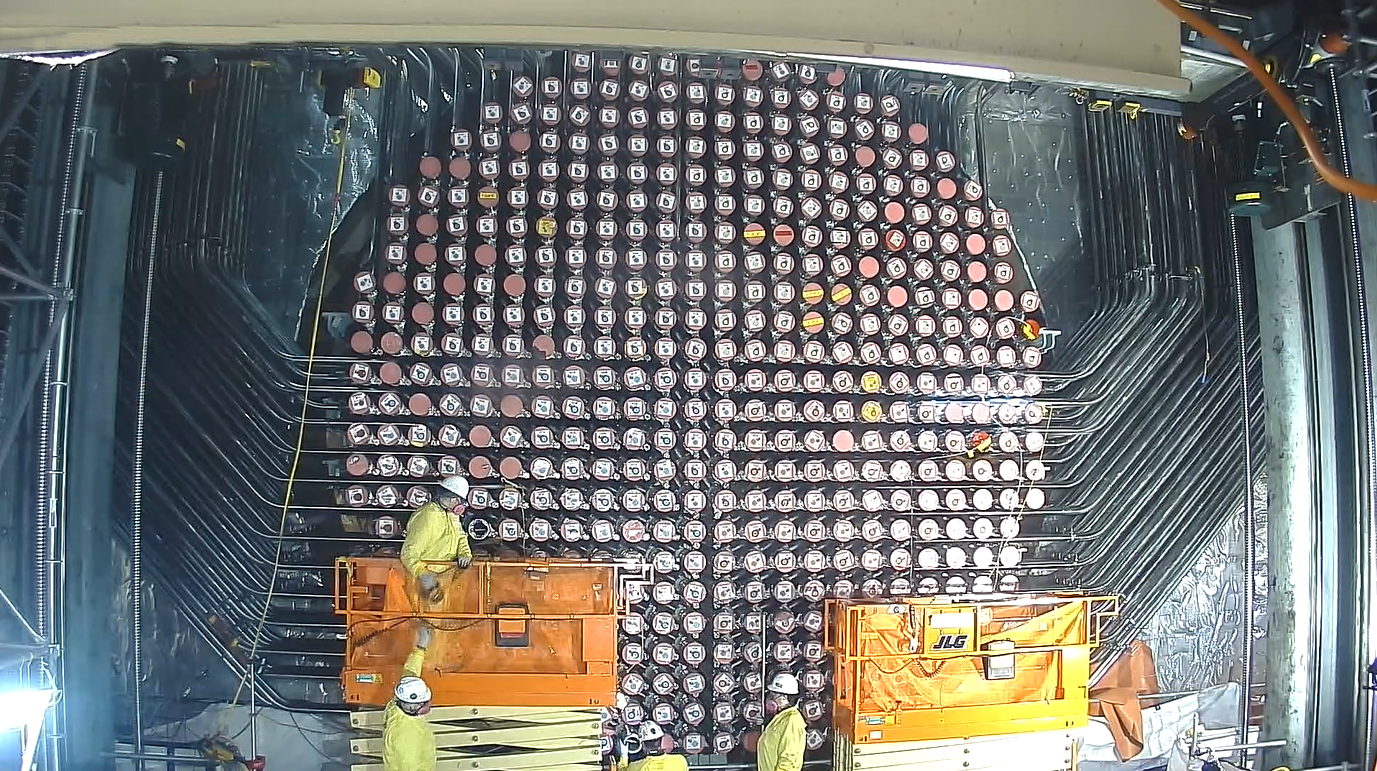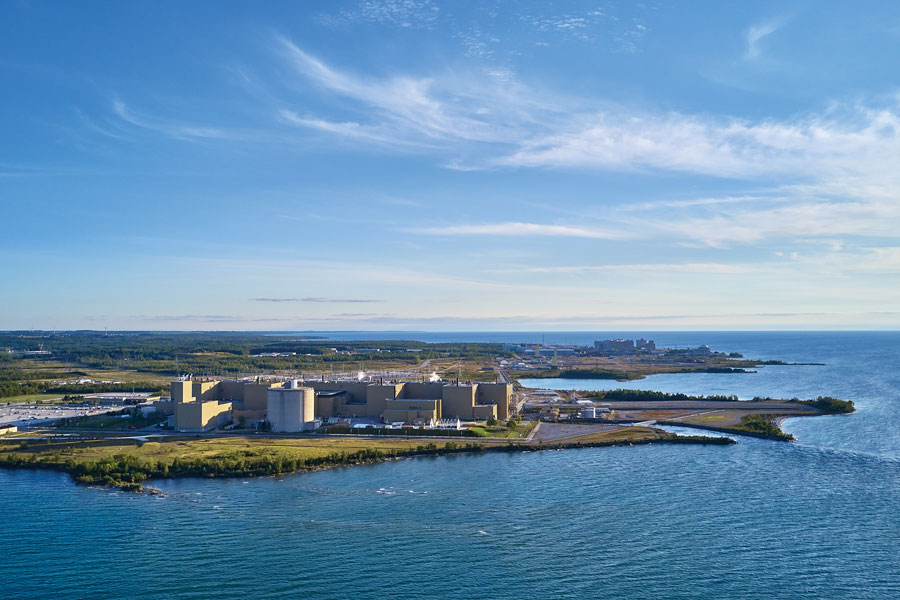INL team removing and staging irradiated ANEEL fuel rodlets in the ATR canal. (Photo: Clean Core)
The Darlington nuclear power plant. (Photo: OPG)
Ontario Power Generation’s expansive refurbishment project on its four 878-MWe CANDU units at the Darlington nuclear power plant is proceeding faster than expected, OPG announced on September 17.
The Bruce Power nuclear power plant. (Photo: Bruce Power)
The partially constructed Units 3 and 4 at Cernavoda nuclear plant in Romania. (Image: Nuclearelectrica)
The European Commission has issued a positive opinion on the technical and nuclear safety aspects of the construction of Units 3 and 4 at Cernavoda nuclear power plant in Romania.
Under the Euratom Treaty, nuclear project developers are required to notify the EC of planned investments and to demonstrate compliance with the highest nuclear safety standards.
The Kakrapar nuclear power plant. (Photo: India’s Department of Atomic Energy)
The initial loading of nuclear fuel into the Kakrapar-4 reactor core has begun, the Nuclear Power Corporation of India Ltd. has announced. Permission for fuel load was granted by India’s Atomic Energy Regulatory Board “after carrying out stringent safety and security reviews,” according to the NPCIL.
Romania’s Cernavoda Units 1 and 2. (Photo: Nuclearelectrica)
Canada will provide C$3 billion (about $2.2 billion) in export financing to Romania’s nuclear operator, Nuclearelectrica, in support of Canadian participation in the project to complete Units 3 and 4 at the Cernavoda nuclear plant, Canadian minister of energy Jonathan Wilkinson announced last week.
Bruce Power operations staff synchronizes Unit 6 to the Ontario electrical grid on September 8. (Photo: Bruce Power)
The ongoing major component replacement (MCR) project at Ontario’s Bruce nuclear power plant reached another milestone last Friday with the reconnection to the grid of the facility’s Unit 6 reactor. According to a release from plant operator Bruce Power, the work was completed ahead of schedule and on budget despite the challenges of the COVID-19 pandemic.
The Gentilly nuclear power plant. (Photo: Hydro-Québec)
Québec government–owned utility Hydro-Québec, Canada’s largest power provider, is looking into the feasibility of restarting Unit 2 at the Gentilly nuclear power plant, various Canadian news outlets reported last week.
The Bruce nuclear power plant in Ontario, Canada. (Photo: Bruce Power)
Unit 6 at the Bruce nuclear power plant in Kincardine, Ontario, achieved a sustained fission chain reaction over the weekend—a key step in returning the 817-MWe CANDU reactor to commercial operation, Bruce Power announced yesterday.
The Darlington nuclear power plant. (Photo: OPG)
Ontario Power Generation has achieved another milestone in its massive Darlington nuclear plant refurbishment project, and in rather impressive fashion: The Unit 3 CANDU reactor has been reconnected to Ontario’s electricity grid 169 days ahead of schedule, according to a July 18 OPG media release.
Ontario energy minister Todd Smith (left) and Ontario Power Generation president and CEO Ken Hartwick announce plans for three more BWRX-300 units at Darlington. (Photo: OPG)
If we’re in a new nuclear renaissance, its capital would appear to be Ontario. On July 7, just two days after debuting a collaboration with Bruce Power to build up to 4.8 GW of new nuclear generation at the Bruce plant, the government of Ontario announced that it is working with Ontario Power Generation to begin planning and licensing for the deployment of three additional GE Hitachi Nuclear Energy (GEH) BWRX-300 small modular reactors at that utility’s Darlington site.
The Bruce nuclear power plant. (Photo: Bruce Power)
Canada’s Bruce Power, operator of Ontario’s eight-unit Bruce nuclear power plant, has announced the issuance of C$600 million (about $446.3 million) in green bonds in support of the company’s net-zero-by-2027 goal. (Investopedia defines green bonds as fixed-income instruments specifically earmarked to raise money for environmentally friendly projects.)
A rendering of the BWRX-300 small modular reactor. (Image: GE Hitachi Nuclear Energy)
Wilmington, N.C.–based GE Hitachi Nuclear Energy and Canadian firms Ontario Power Generation, SNC-Lavalin, and Aecon announced this morning the signing of a contract for the deployment of a BWRX-300 small modular reactor at OPG’s Darlington nuclear site in Canada. According to the announcement, it is the first commercial contract for a grid-scale SMR in North America.
Representatives of OPG and GEH join Ontario government officials on December 2 to mark the start of site preparations for the Darlington SMR project. (Photo: Doug Ford via Twitter)
The Ontario government has announced the start of site preparation at the Darlington nuclear power plant for Canada’s first grid-scale small modular reactor: GE Hitachi Nuclear Energy’s (GEH) BWRX-300.
